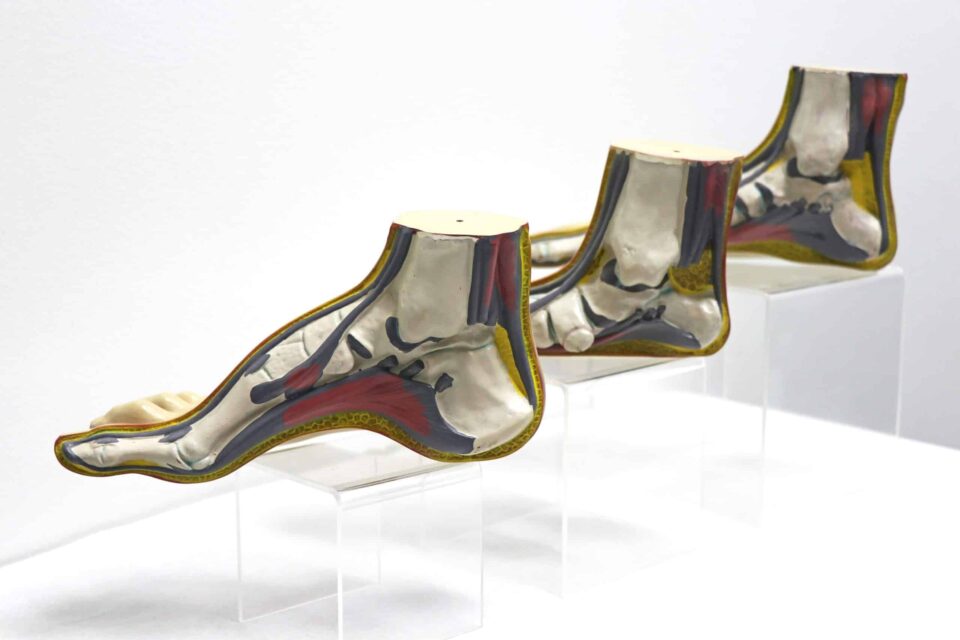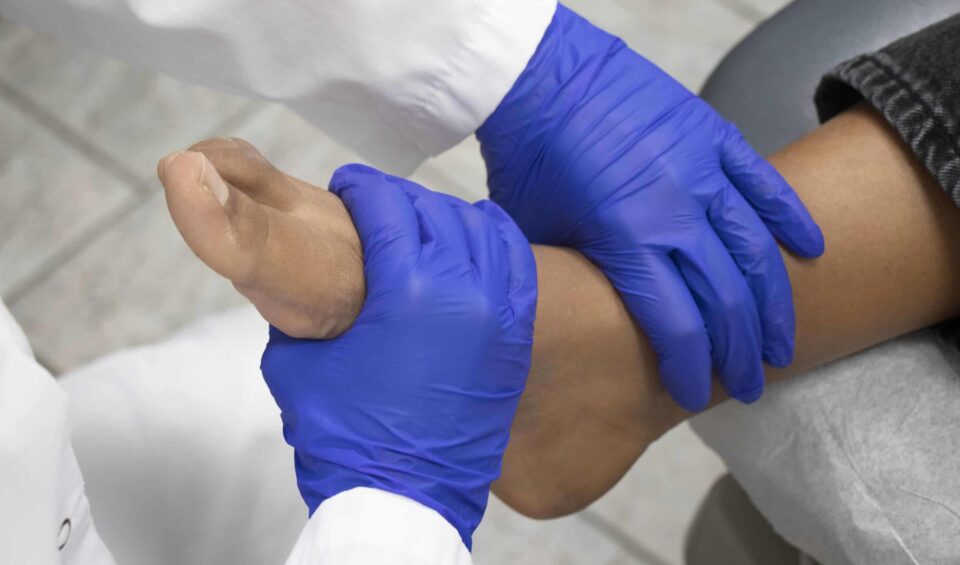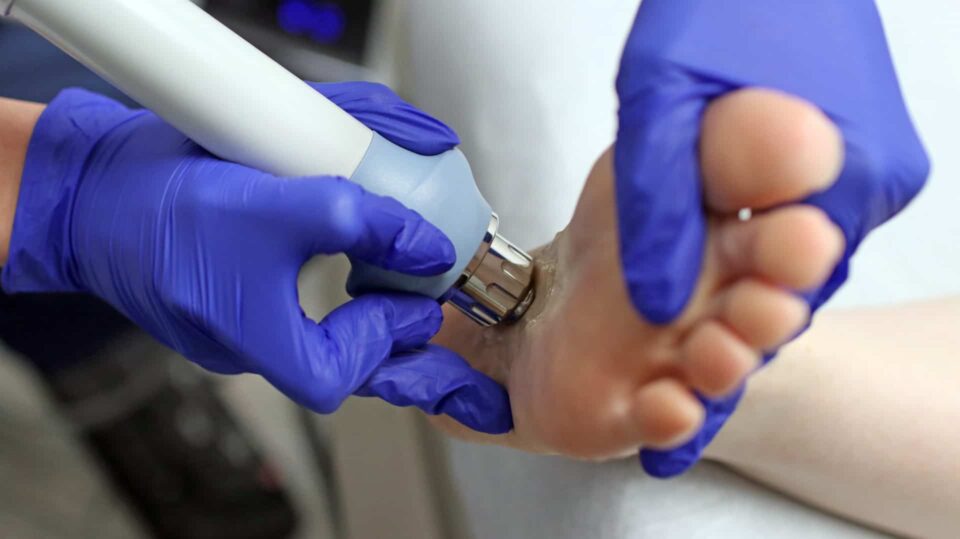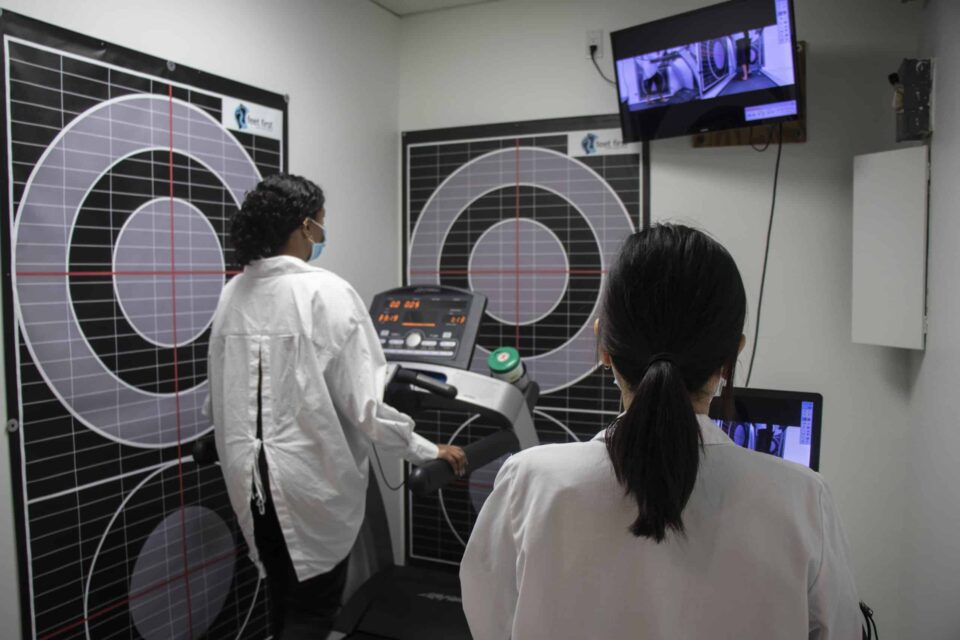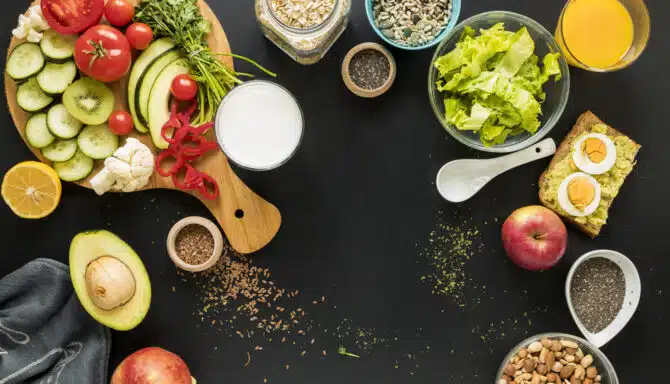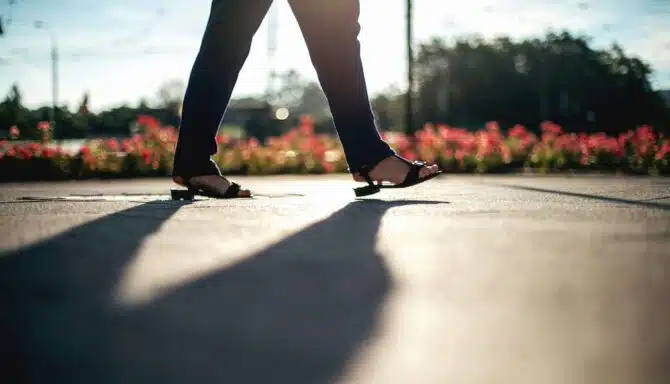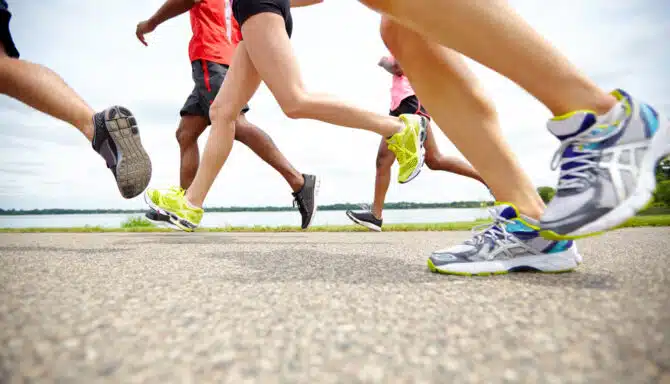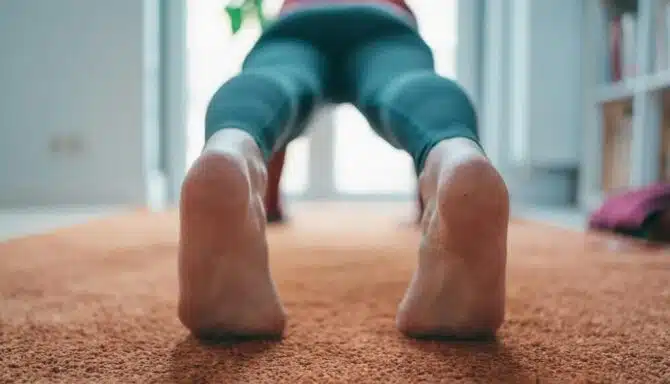July 1, 2024
Gout is one of the most painful foot conditions and types of arthritis. It also has a deep connection to the foods and drinks you consume on a regular basis. The benefits of good nutrition are two-fold: they can help with gout prevention and manage your flare-ups. Let’s look at the science behind a gout diet, what to avoid, and what delicious and nutritious foods you can add to your daily menu.
Gout and Dietary Health: What to Avoid
Gout management and prevention through diet mainly involves avoiding purine.
This is a chemical compound found in food and drink. It leads to high uric acid levels (hyperuricemia) that then form the crystals around the joints that trigger inflammation and ultimately result in the onset of a gout attack.
Arthritis-Health tells us there is no way to fully avoid purine since it is found in the cells of virtually everything we consume. But you can maintain a low-purine diet by avoiding foods and drinks with high levels.
One of the main culprits is alcohol. Not only does it contain a lot of purine, but it can prevent your body from metabolizing and eliminating uric acid. Beer has the most purine compared to spirits and wine. However, fortified wine, stouts and ports are also high in purine.
Other drinks to sip sparingly include high-sugar juices and sodas — there is a lot of purine in high-fructose corn syrup!
When it comes to food, seafood like sardines, anchovies and shellfish are full of purine, as are red meats, organ meats and processed meats like hot dogs, salami, etc. Of course, everything in moderation is key, but these proteins should be avoided when you have other alternatives.
The Best Gout-Friendly Foods
The word "diet" can be frustrating because it represents restriction. But sometimes for our health, we have to do what's best for us. This is the case for a gout diet.
Remember, the lifestyle changes you make to control this condition don’t mean that you can’t enjoy delicious foods. Here is a list of just some of the nutrient-dense and low purine foods you can have:
Eggs
Nuts and legumes
Fresh fruit with natural sugars. Be careful of preserves, packaged, or canned fruits as they often sneak in high-fructose corn syrup.
Tomatoes
Poultry
Salmon
Leafy greens
Popcorn
Whole grains
Low-sugar desserts
When planning your new menu, you may be surprised to see a lot of healthy foods, like mushrooms, asparagus and cauliflower, have moderate purine levels. It’s okay to eat them on occasion.
Another simple thing you can add to your diet to prevent gout flare-ups is to drink enough water! The Arthritis organization recommends a daily intake of 8 cups of water and to increase your intake to 16 glasses if you are experiencing a flare up.
Click here to learn what foods are great for general foot health; just be sure to double check purine levels.
June 13, 2024
Did you know that the joint at the base of our big toe bears about 40% of our bodyweight when we move? It plays a significant role when we walk and run, and because of the weight it bears (literally), it's prone to arthritis. This condition is called hallux rigidus (often referred to as "stiff big toe") and it causes the joint to lose its range of motion. While a "stiff joint" may seem small, it actually can significantly alter our biomechanics and can cause pain and difficulty walking and running. While non-surgical treatments such as medication, orthotics, and physical therapy can help in the early stages, more severe cases may require surgical intervention.
One such surgical procedure to treat hallux rigidus is a cheilectomy. This article will explore what a cheilectomy is, its benefits, risks, and the recovery process.
What is a cheilectomy
A side-by-side of two feet: on the left is the post-surgical foot with a surgical shoe. On the right is the equivalent surgical reference for where the surgery is done and the incision size.
A cheilectomy is a surgical procedure that alleviates pain and restores motion in the big toe joint affected by hallux rigidus. This procedure removes bone spurs (osteophytes) and diseased tissue from the top of the metatarsal bone, which reduces pain and allows the joint to move more freely.
Cheilectomy: The procedure
A cheilectomy is usually done under local or general anaesthesia. The surgeon makes an incision over the top of the affected joint and then carefully removes the excess bone and tissue and smooths the joint surface. This frees up more space for joint movement. In some cases, the surgeon may do additional procedures, such as joint capsule release or cartilage repair, to improve the outcome.
Cheilectomy: The benefits
An aerial view of a bone spur above the first MTP joint (left foot, right of image).
Pain relief: A cheilectomy can significantly reduce pain and discomfort associated with hallux rigidus by eliminating bone spurs and diseased tissue.
Improved motion: The procedure frees up space around the big toe joint, which gives it more room to move around and restores the toe's flexibility and range of motion. This makes walking, running, and other activities more comfortable.
Preservation of joint function: Unlike more invasive procedures like joint fusion, a cheilectomy aims to preserve the natural mechanics of the big toe joint, which helps maintain its function and stability.
The same foot with the bone spur above the first MTP joint removed.
Cheilectomy: Risks and considerations
While cheilectomy is generally considered safe and effective, like any surgical procedure, it carries certain risks. These include infection, bleeding and nerve damage. There are also many factors that can affect the outcome, such as the severity of the condition, age, and the patient's overall foot health. If you're considering a cheilectomy, it's important to discuss the risks and the benefits with your healthcare provider so that you can manage your expectations properly assess with a cheilectomy is right for you.
Cheilectomy: What's the recovery?
Following a cheilectomy, it's normal to experience discomfort and swelling. You can manage this with pain medication and elevation. You'll also need to do physiotherapy during the recovery process to restore the strength and flexibility in the toe joint.
Most patients are fully weight-bearing immediately after the surgery, and can usually return to light activities within a few weeks; however full recovery takes several months. Stitches are typically removed 2 weeks after the procedure. It's important to follow post-operative instructions from the surgeon and to attend routine follow-up appointments to monitor the progress.
May 20, 2024
As the temperatures rise and the sun shines brighter, it's time to ditch the closed-toe shoes and slide into something more comfortable and breathable. Yes, it's sandal season! But with so many options available, how do you choose the best sandals for your summer adventures? We've got you covered.
In this guide, we'll explore the essential features to look for in summer sandals and introduce you to some top picks that seamlessly blend style with comfort.
Cork footbed
One key feature to consider when selecting summer sandals is the footbed material. Cork footbeds are famous for their ability to mould to the shape of your foot over time, providing personalized support and cushioning.
Additionally, cork is lightweight and absorbs shock, making it an excellent option for all-day wear. Whether strolling along the boardwalk or exploring a new city, sandals with cork footbeds ensure your feet stay comfortable and supported.
Arch support
Arch support is essential, especially if you plan on wearing your sandals for extended periods. It distributes weight across your feet, reducing strain and preventing discomfort. A lack of arch and forefoot support can lead to foot problems like plantar fasciitis or metatarsalgia.
Look for sandals with arch support or removable insoles. You can customize the level of support to your liking. Your feet will thank you after a long day of sightseeing or outdoor activities.
Backstraps for support
While slip-on sandals are convenient, they may provide a different level of support and stability than those with backstraps.
Backstraps help secure the sandals to your feet, preventing them from slipping and sliding with each step. Added stability is particularly beneficial if you plan to engage in more active pursuits or tend to pronate or supinate. Backstraps come in various styles, from adjustable buckles to elasticized bands, allowing you to find the perfect fit for your feet.
Our top picks
Now that we've covered the essential features to look for in summer sandals let's introduce you to some top picks that effortlessly combine style with comfort.
NAOT Cornet and NAOT Castelo
Best for cork footbeds
With their contoured cork footbeds and adjustable backstraps, NAOT sandals offer exceptional comfort and support. The NAOT Cornet and NAOT Castelo styles feature chic designs that transition seamlessly from day to night.
Mephisto Hester and Mephisto Hetty
Best for cork footbeds
Mephisto sandals are renowned for their superior craftsmanship and comfort technology. The Mephisto Hester and Mephisto Hetty models boast cushioned footbeds with arch support and durable backstraps for added stability.
Aetrex Jess
Best for arch support
The Aetrex Jess sandals feature a built-in Lynco orthotic footbed for maximum support and alignment. The adjustable backstrap ensures a secure fit, making them ideal for all-day wear.
NAOT Enid and NAOT Amadora
Best for backstrap support
NAOT offers a range of stylish sandals with cork footbeds and backstrap designs. The NAOT Enid and NAOT Amadora are built with quality and comfort in mind. The three variations three are perfect for summer adventures.
Mephisto Norine
Best for backstrap support
The Mephisto Norrine sandals combine elegance with functionality. Featuring Soft-Air technology and adjustable straps, they provide unparalleled comfort and support for any occasion.
May 16, 2024
Top-notch athletic foot health is key, especially when summer rolls around. Your activity level changes in the summer when you start spending more time outdoors pounding the pavement in the sun. To make sure your feet don't hold you back from your summer plans, here are our top summer sports foot care tips for healthy feet.
Preventing Summer Sports Injuries in Athletes
When it comes to foot care and sports, the right footwear and healthy exercises/stretches are always a winning combo. Below you’ll find the most common strain-related summer sports injuries and what you can do to stay on your feet!
Achilles Tendonitis
Avoid straining the Achilles tendon by gradually increasing activity intensity. For example, run shorter distances while working your way up to longer journeys.
Stretch the calf muscles / Achilles tendon every day. Try the calf exercises in this article. Also make sure you stretch your soleus muscle too!
Wear runners with an elevated heel, turned-up toe and rocker soles. (Learn more about rocker soles here.)
Ankle Sprains
Wear athletic shoes with stong ankle support while playing sports like basketball and volleyball. Shoes with wider soles can help too.
If you’re prone to sprains or tend to overpronate when you walk, try stability shoes.
Strengthen your ankles with these exercises.
Stress Fractures
Stability and motion control shoes with a more rigid design and thick soles are good for runners who may be prone to stress fractures.
Gradually increase activity intensity to avoid hurting yourself, especially if you have been on hiatus!
To avoid stress fractures while strength training or weight lifting, wear a shoe with a wider toe box, a hard/thick sole and a minimum level of cushioning.
Plantar Fasciitis
Wear the best shoes for plantar fasciitis. These tend to be stability shoes, but neutral can also work. The key thing is to look for shoes with sufficient arch support.
Perform strengthening and preventative stretches that target the plantar fascia. These include calf stretches, towel stretches, and more that you can find here.
Runner’s Knee (Patellofemoral Pain Syndrome)
Prevent knee pain by strength training, paying close attention to the quadriceps and hip muscles.
Avoid shoes with a raised heel, as they can place too much pressure on the knee joint.
There should be a medium amount of cushioning in shoes; too much can cause knee instability.
Foot Care Tips for Preventing All Injuries
Footwear should always be well-fitted and supportive, regardless of what injury you're trying to prevent.
Certain features can help defend against specific injuries, but shoes must always fit properly, leaving enough room for the foot to position itself and for the toes to spread. Shoes must also always have some level cushioning and support. Lightweight shoes tend to be beneficial for athletes when competing so they can propel forward more effortlessly. Additionally, athletes should always wear running shoes with good shock absorption; it acts as a barrier between your joints and the impact from the ground.
You can also boost your protection with custom orthotics or Superfeet insoles. These offer extra support for your feet and joints.
Preventing Skin Conditions in Athletes
One of the most infamous skin issues athletes face in the summertime are blisters. Running outside in the hot sun can cause increased friction and moisture buildup in your shoe environment. Even though most blisters go away on their own, competitive runners and racers can sometimes face serious blister complications like intense pain, sepsis, and cellulitis.
Ensure your footwear fits well so your skin isn’t rubbing harshly against your shoes. To tackle the moisture problem, try sweat-wicking socks and foot deodorants, which come as sprays, powders and creams (these can also help with foot odour and athlete's foot prevention). Medical devices like custom orthotics, insoles and blister pads can also help place feet in the best position for preventing blisters.
May 6, 2024
Summertime means storing those winter boots and slipping into your favourite warm-weather footwear. But before you hit the beach or embark on a summer hike, remember that giving your feet the care they deserve is not just essential; it's the key to thoroughly enjoying all your summer adventures — whether at the beach, pool or outside exercising! Your feet are your foundation for summer fun, so let's ensure they're in top shape with proper summer foot care.
Here are some simple yet effective tips to keep your feet happy and healthy during the hot months ahead. These easy-to-follow tips can significantly impact your foot health, giving you the confidence to easily step into summer.
1. Keep your feet and yourself hydrated
Like the rest of your body, your feet need hydration. Ensure you drink plenty of water to prevent dehydration, reducing the risk of dry, cracked skin on your feet. Additionally, apply a hydrating lotion or cream to your feet every day to keep them soft and supple.
2. Choose breathable footwear
Sandals or breathable shoes encourage air circulation and prevent feet from overheating. Avoid plastic or synthetic materials that trap moisture and produce sweaty, smelly feet.
3. Protect your feet from the sun
Apply sunscreen to your feet, particularly when exposed to the sun for extended periods. Like the rest of your body, your feet's skin is susceptible to sunburn. Use a broad-spectrum sunscreen with an SPF of 30 or higher before heading outdoors. Consider re-applying every two hours and more regularly if swimming or sweating. See the Canadian Dermatology Association's list of products that adhere to their standards.
4. Keep your feet clean and dry
Summer heat can increase the risk of fungal infections like athlete's foot. To prevent this, wash your feet daily with soap and water. Then, dry thoroughly, especially between the toes. Use a foot powder to absorb moisture, reducing the risk of fungal growth.
5. Trim your toenails (properly)
Untrimmed toenails can lead to discomfort and increase the risk of ingrown toenails, especially during summer activities. Trim your toenails straight across. Avoid cutting them too short, and file any rough edges to keep them smooth. Doing so can help prevent ingrown toenails.
6. Give your feet a break
Summer is the perfect time to kick off your shoes and let your feet breathe. Take a moment to walk barefoot on the soft grass or sand to strengthen your foot muscles improve circulation and reconnect with nature. Just be mindful of your surroundings to avoid any injuries or stepping on sharp objects.
7. Stay active this summer with the proper footwear
Whether going for a hike or a run, wearing the right shoes for the activity is important. Proper footwear provides support and cushioning to reduce the risk of foot pain or injury, so invest in a good pair of athletic shoes that fit well and suit your chosen activity.
8. Treat your feet to a relaxing soak
After a long summer of fun, treat your feet to a soothing foot soak to relax tired muscles and rejuvenate your skin. Fill a bath or basin with warm water. Then, add Epsom salt or a few drops of essential oils (like lavender or peppermint) for an extra touch of luxury.
9. Pay attention to warning signs
If you experience persistent foot pain, swelling, or any worrisome symptoms, don't ignore them. These could be signs of a foot condition or injury requiring medical attention. Consult a chiropodist or healthcare professional for proper diagnosis and treatment.
10. Practice good foot care year-round
Finally, remember that foot care is not just for summer. Make it a habit to take care of your feet year-round by wearing comfortable, supportive shoes, maintaining good foot hygiene, and promptly addressing foot issues.
By following these tried-and-tested tips for summer foot care, you can keep your feet happy, healthy, and ready for all the season's adventures. These tips have been proven to work, so you can trust that your feet are in good hands. So go ahead, put your best foot forward, and confidently enjoy everything summer has in store!
April 29, 2024
Heel pain is a common complaint affecting individuals of all ages and lifestyles, from athletes to office workers. It can be frustrating and debilitating, whether it's caused by plantar fasciitis, heel spurs, or Achilles tendonitis. Fortunately, you can take steps to prevent heel pain and keep your feet happy and healthy.
This blog post explores practical tips and exercises for preventing heel pain and maintaining optimal foot health.
Causes of heel pain
Before diving into prevention strategies, it's essential to understand the common causes of heel pain. Plantar fasciitis, the inflammation of the band of tissue that runs along the bottom of the foot, is one of the leading causes of heel pain. Other culprits include:
Heel spurs
Bony growths on the heel bone
Achilles tendonitis
Inflammation of the Achilles tendon at the back of the heel
Factors such as improper footwear, overuse, obesity, and poor foot mechanics can contribute to the development of heel pain.
Heel pain prevention tips
Choose supportive footwear. Invest in shoes that provide adequate arch support, cushioning, and stability. Look for options with a slightly elevated heel to reduce strain on the Achilles tendon and plantar fascia.
Maintain a healthy weight. Excess weight can put added pressure on the feet and exacerbate heel pain. Maintain a healthy weight through a balanced diet and regular exercise to reduce the risk of developing heel pain.
Gradually increase activity. Avoid sudden increases in physical activity, such as jumping into a rigorous exercise routine or increasing mileage too quickly. Gradually increase activity levels to allow your feet time to adapt and prevent overuse injuries.
Stretch regularly. Incorporate stretching exercises into your daily routine to improve flexibility and prevent tightness in the calf muscles and Achilles tendon. Focus on stretching the calves, hamstrings, and plantar fascia to alleviate tension and reduce heel strain.
Practice good foot mechanics. Pay attention to your foot mechanics when walking, running, or participating in sports. Avoid overpronation or excessive rolling inward of the feet, as this can strain the plantar fascia and Achilles tendon.
Heel pain exercises
Calf stretch. Stand facing a wall with one foot in front of the other, keeping the back leg straight and the heel on the ground. Lean forward, bending the front knee until you feel a stretch in the calf of the back leg. Hold for 30 seconds, then switch sides.
Plantar fascia stretch. Sit on the floor with one leg extended before you. Loop a towel around the foot and gently pull the toes towards you until you feel a stretch along the bottom of the foot. Hold for 30 seconds, then switch sides.
Achilles tendon stretch. Stand facing a wall with one foot in front of the other. Place your hands on the wall at shoulder height and lean forward, bending the front knee until you feel a stretch in the back of the lower leg. Hold for 30 seconds, then switch sides.
Heel pain can be debilitating and impact daily activities and quality of life. Incorporating these prevention tips and exercises into your routine can reduce the risk of developing heel pain and keep your feet healthy and pain-free. Remember to listen to your body and seek professional medical attention if you experience persistent or severe heel pain.
